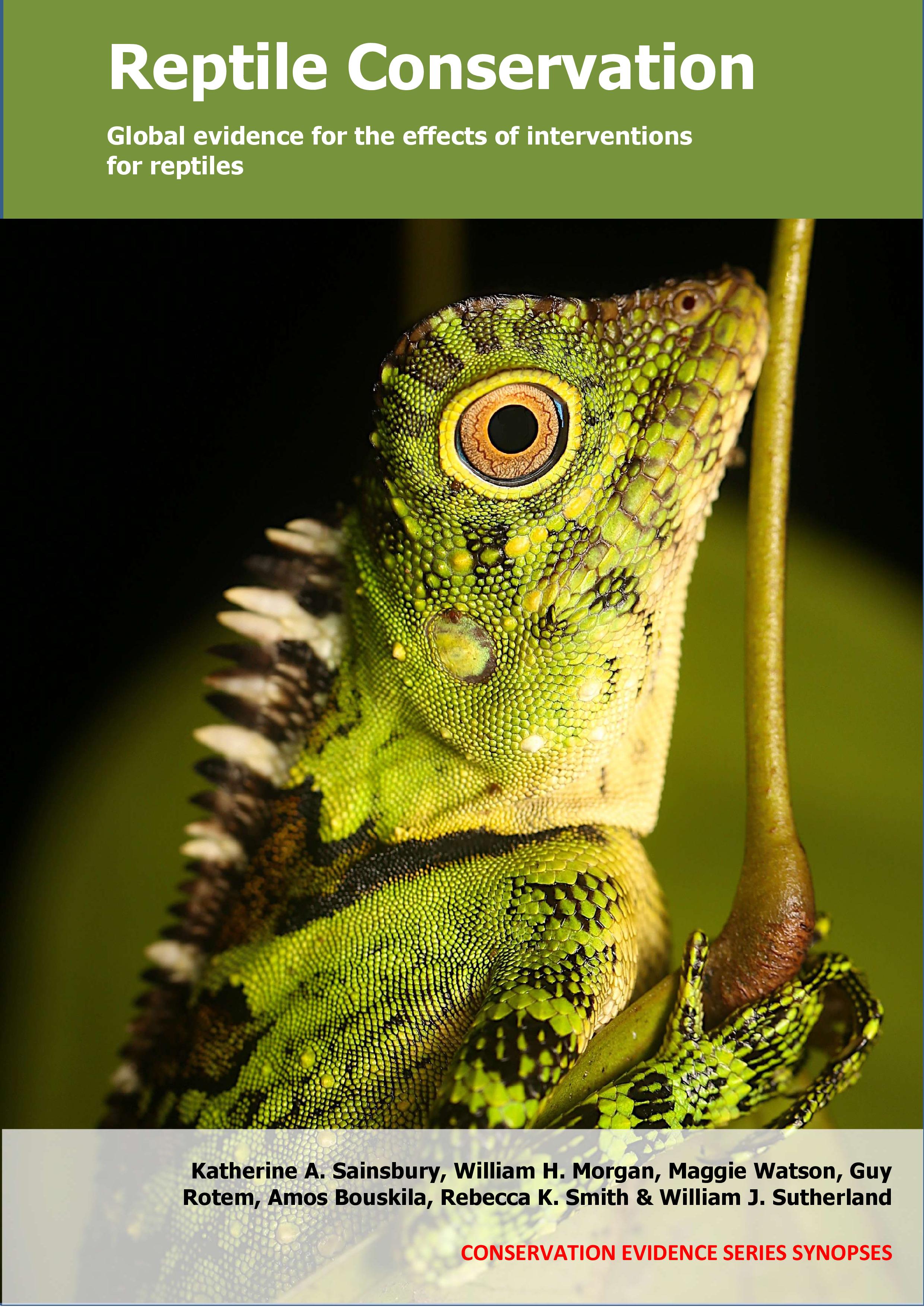Actions to conserve biodiversity
We have summarised evidence from the scientific literature about the effects of actions to conserve wildlife and ecosystems.
Review the evidence from the studies
Not sure what Actions are? Read a brief description.
Search for evidence
e.g. "frogs chytrid"
312 Actions found
Refine
Hide
312 Actions found
Download Actions
| 0 selected |
|
Order results by:
| Action | Effectiveness | Studies | Category | |
|---|---|---|---|---|
|
Use selective logging Action Link |
Awaiting assessment | 3 |
|
|
|
Restore or maintain beaches (‘beach nourishment’) Action Link |
Awaiting assessment | 3 |
|
|
|
Restore island ecosystems Action Link |
Awaiting assessment | 3 |
|
|
|
Alter incubation temperatures to achieve optimal/desired sex ratio: Crocodilians Action Link |
Awaiting assessment | 3 |
|
|
|
Release captive-bred reptiles into the wild: Sea turtles Action Link |
Awaiting assessment | 3 |
|
|
|
Bring threatened wild populations into captivity Action Link |
Awaiting assessment | 3 |
|
|
|
Limit or exclude off-road vehicle use Action Link |
Awaiting assessment | 2 |
|
|
|
Cease livestock grazing: Wetland Action Link |
Awaiting assessment | 2 |
|
|
|
Create uncultivated margins around arable or pasture fields Action Link |
Awaiting assessment | 2 |
|
|
|
Retain or increase leaf litter or other types of mulch Action Link |
Awaiting assessment | 2 |
|
|
|
Diversify ground vegetation and canopy structure in the habitat around woody crops Action Link |
Awaiting assessment | 2 |
|
|
|
Plant trees on farmland Action Link |
Awaiting assessment | 2 |
|
|
|
Modify vessels to reduce or prevent injuries to reptiles from collisions Action Link |
Awaiting assessment | 2 |
|
|
|
Reduce duration of time fishing gear is in the water Action Link |
Awaiting assessment | 2 |
|
|
|
Use visual deterrents on fishing gear Action Link |
Awaiting assessment | 2 |
|
|
|
Use non-offset hooks Action Link |
Awaiting assessment | 2 |
|
|
|
Use larger hooks Action Link |
Awaiting assessment | 2 |
|
|
|
Use dyed bait Action Link |
Awaiting assessment | 2 |
|
|
|
Use a different bait type: Tortoises, terrapins, side-necked & softshell turtles Action Link |
Awaiting assessment | 2 |
|
|
|
Use shelterwood harvesting Action Link |
Awaiting assessment | 2 |
|
|
|
Leave standing/deadwood snags in forests Action Link |
Awaiting assessment | 2 |
|
|
|
Provide artificial shade for individuals Action Link |
Awaiting assessment | 2 |
|
|
|
Use nest covers to protect against human disturbance Action Link |
Awaiting assessment | 2 |
|
|
|
Use irrigation systems Action Link |
Awaiting assessment | 2 |
|
|
|
Use prescribed burning: Wetland Action Link |
Awaiting assessment | 2 |
|
Download Actions
| 0 selected |
|

Reptile Conservation - Published 2021
Reptile synopsis
Watch this search
If you are familiar with RSS feeds, please click the button below to retrieve the feed URL:
RSS feed for this searchIf you are unfamiliar with RSS feeds, we would suggest reading this BBC article.
Unfortunately, due to the number of feeds we have available, we cannot provide e-mail updates. However, you could use tools such as Feed My Inbox to do this for you.
What are 'Individual studies' and 'Actions'?
Individual studies
An individual study is a summary of a specific scientific study, usually taken from a scientific journal, but also from other resources such as reports. It tells you the background context, the action(s) taken and their consequences.
If you want more detail please look at the original reference.
Actions
Each action page focuses on a particular action you could take to benefit wildlife or ecosystems.
It contains brief (150-200 word) descriptions of relevant studies (context, action(s) taken and their consequences) and one or more key messages.
Key messages show the extent and main conclusions of the available evidence. Using links within key messages, you can look at the paragraphs describing each study to get more detail. Each paragraph allows you to assess the quality of the evidence and how relevant it is to your situation.
Where we found no evidence, we have been unable to assess whether or not an intervention is effective or has any harmful impacts.





)_2023.JPG)














